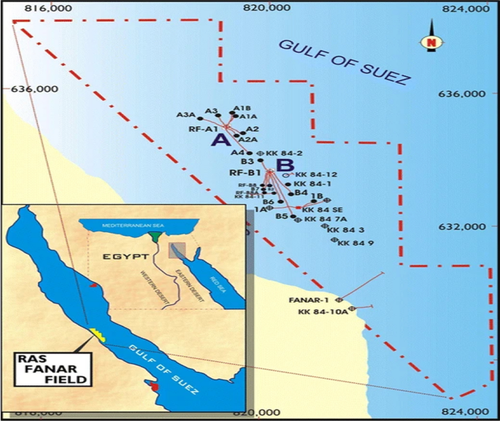Environmental Earth Sciences ( IF 2.8 ) Pub Date : 2024-04-08 , DOI: 10.1007/s12665-024-11534-0 Mostafa S. Khalid , Ahmed S. Mansour , Saad El-Din M. Desouky , Walaa S. M. Afify , Sayed F. Ahmed , Osama M. Elnaggar

|
Predicting and interpolating the permeability between wells to obtain the 3D distribution is a challenging mission in reservoir simulation. The high degree of heterogeneity and diagenesis in the Nullipore carbonate reservoir provide a significant obstacle to accurate prediction. Moreover, intricate relationships between core and well logging data exist in the reservoir. This study presents a novel approach based on Machine Learning (ML) to overcome such difficulties and build a robust permeability predictive model. The main objective of this study is to develop an ML-based permeability prediction approach to predict permeability logs and populate the predicted logs to obtain the 3D permeability distribution of the reservoir. The methodology involves grouping the reservoir cored intervals into flow units (FUs), each of which has distinct petrophysical characteristics. The probability density function is used to investigate the relationships between the well logs and FUs to select high-weighted input features for reliable model prediction. Five ML algorithms, including Linear Regression (LR), Polynomial Regression (PR), Support Vector Regression (SVR), Decision Trees (DeT), and Random Forests (RF), have been implemented to integrate the core permeability with the influential well logs to predict permeability. The dataset is randomly split into training and testing sets to evaluate the performance of the developed models. The models’ hyperparameters were tuned to improve the model’s prediction performance. To predict permeability logs, two key wells containing the whole reservoir FUs are used to train the most accurate ML model, and other wells to test the performance. Results indicate that the RF model outperforms all other ML models and offers the most accurate results, where the adjusted coefficient of determination (R2adj) between the predicted permeability and core permeability is 0.87 for the training set and 0.82 for the testing set, mean absolute error and mean squared error (MSE) are 0.32 and 0.19, respectively, for both sets. It was observed that the RF model exhibits high prediction performance when it is trained on wells containing the whole reservoir FUs. This approach aids in detecting patterns between the well logs and permeability along the profile of wells and capturing the wide permeability distribution of the reservoir. Ultimately, the predicted permeability logs were populated via the Gaussian Random Function Simulation geostatistical method to build a 3D permeability distribution for the reservoir. The study outcomes will aid users of ML to make informed choices on the appropriate ML algorithms to use in carbonate reservoir characterization for more accurate permeability predictions and better decision-making with limited available data.
中文翻译:

通过机器学习改进非均质碳酸盐岩油藏的渗透率预测:应用于埃及苏伊士湾 Ras Fanar 油田中中新统 Nullipore
预测和插值井之间的渗透率以获得 3D 分布是油藏模拟中的一项具有挑战性的任务。 Nullipore碳酸盐岩储层的高度非均质性和成岩作用给准确预测带来了重大障碍。此外,储层中岩心和测井数据之间存在着复杂的关系。本研究提出了一种基于机器学习(ML)的新方法来克服这些困难并建立强大的渗透率预测模型。本研究的主要目的是开发一种基于机器学习的渗透率预测方法来预测渗透率测井并填充预测测井以获得储层的 3D 渗透率分布。该方法涉及将储层取心层段分组为流动单元(FU),每个流动单元具有不同的岩石物理特征。概率密度函数用于研究测井曲线和 FU 之间的关系,以选择高权重输入特征进行可靠的模型预测。已经实施了五种机器学习算法,包括线性回归(LR)、多项式回归(PR)、支持向量回归(SVR)、决策树(DeT)和随机森林(RF),以将岩心渗透率与有影响的测井曲线相结合来预测渗透率。数据集被随机分为训练集和测试集,以评估所开发模型的性能。调整模型的超参数以提高模型的预测性能。为了预测渗透率测井,使用包含整个储层 FU 的两口关键井来训练最准确的 ML 模型,并使用其他井来测试性能。结果表明,RF 模型优于所有其他 ML 模型,并提供最准确的结果,其中预测渗透率和岩心渗透率之间的调整决定系数 ( R 2 adj ) 训练集为 0.87,测试集为 0.82,平均值两组的绝对误差和均方误差 (MSE) 分别为 0.32 和 0.19。据观察,RF 模型在包含整个储层 FU 的井上进行训练时表现出较高的预测性能。这种方法有助于检测测井曲线和沿井剖面的渗透率之间的模式,并捕获储层的广泛渗透率分布。最终,通过高斯随机函数模拟地质统计学方法填充预测的渗透率测井,以构建储层的 3D 渗透率分布。研究结果将帮助机器学习用户就适当的机器学习算法做出明智的选择,以用于碳酸盐岩储层表征,从而利用有限的可用数据进行更准确的渗透率预测和更好的决策。



























 京公网安备 11010802027423号
京公网安备 11010802027423号